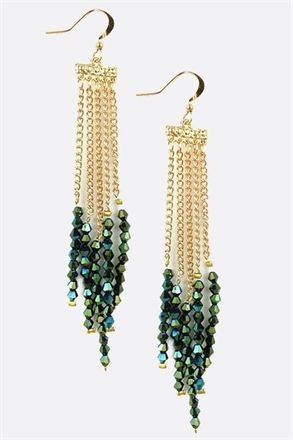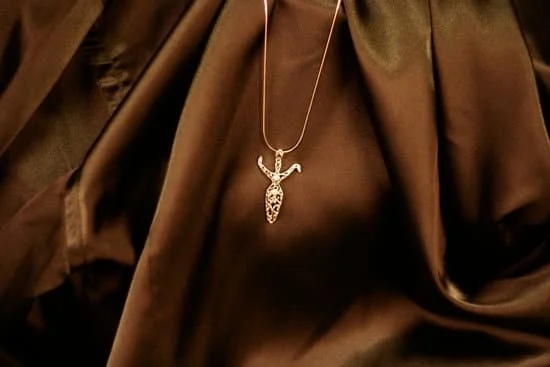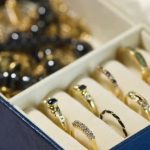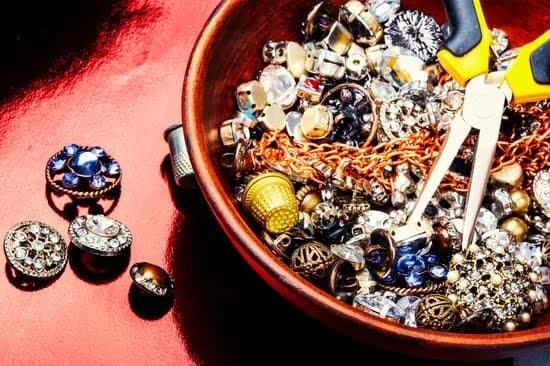In the dazzling world of the Roaring Twenties, where flapper dresses and jazz music reigned supreme, a new era of glamour was born: Art Deco. And nothing exemplified this luxurious aesthetic quite like the magnificent jewelry of the era. From diamond-encrusted cocktail rings to geometrically-inspired necklaces, the opulence of Art Deco jewelry was on full display in the advertisements that adorned every magazine page.
As we delve into the captivating allure of Art Deco through 1920s jewelry ads, we embark on a journey into a time when elegance and exuberance prevailed. In this introductory section, we will set the scene by exploring the Golden Age of Art Deco in the 1920s and provide a brief history of its influence on fashion and design.
We will also examine how these jewelry advertisements became works of art themselves, showcasing not only stunning pieces but also becoming defining symbols of an era that celebrated modernity and sophistication.
What made these advertisements so alluring? It was not simply about selling jewelry; it was about selling an entire lifestyle. In this introduction, we will delve into how advertising transformed Art Deco jewelry, unraveling the impact of marketing strategies on shaping public perception. We will analyze both visual and rhetorical techniques employed by advertisers to captivate audiences and explore the role played by fashion magazines and other media in promoting these exquisite pieces.
Join us as we peel back the layers of history to reveal not only the glamourous legacy left behind by these iconic ads but also their significance in reflecting societal changes, empowering women consumers, and influencing contemporary design. With archival examples straight from our glittering collection, we will show you how these ads were much more than just marketing tools – they were expressive works of art that continue to inspire awe today.
So come with us on this journey through time as we rediscover the timeless beauty and allure contained within art deco 1920s jewelry advertisements.
Unveiling the Elegance
During the 1920s, Art Deco jewelry ads showcased an array of exquisite and elegant pieces that captured the spirit of the glamorous era. These advertisements not only promoted the beauty and allure of Art Deco jewelry, but they also reflected the prominent trends and styles of the time. From geometric shapes to bold colors, these ads unveiled the elegance of iconic Art Deco jewelry pieces that defined the era.
Highlighting Dominant Trends and Styles
Art Deco jewelry ads were known for their sleek and modern designs that embraced simplicity while still exuding a sense of luxury. These advertisements often featured clean lines, geometric shapes, and symmetrical patterns that emphasized symmetry and balance. The influence of Cubism and Futurism can be seen in these designs, with abstract motifs that reflected a departure from traditional forms.
The dominant trends in Art Deco jewelry during this era included platinum-based settings, which allowed for delicate yet intricate designs. The use of colored gemstones such as diamonds, emeralds, rubies, and sapphires was also prevalent, adding a vibrant touch to these elegant pieces. Additionally, new materials like lacquer and enamel were incorporated into Art Deco designs, further enhancing their uniqueness.
The Evolution from Art Nouveau to Art Deco
Art Deco jewelry represented a shift from the previous Art Nouveau era characterized by flowing curves and naturalistic motifs. While Art Nouveau celebrated organic forms inspired by nature, Art Deco embraced industrialization and urbanization through its sharp lines and symmetrical shapes.
This evolution can be seen in the jewelry advertisements of the 1920s. While Art Nouveau pieces often had soft colors and fluid lines in their advertisements, Art Deco ads featured bold colors like red, black, white, gold, and silver with sharp edges that mirrored architectural structures.
As artistic movements reflected broader societal changes during this time, Art Deco jewelry embraced a more cosmopolitan and modern aesthetic that resonated with the changing attitudes and aspirations of society.
Reimagining Luxury
Unraveling the impact of marketing and advertising on the perception of jewelry during the 1920s
During the 1920s, advertising played a pivotal role in transforming how society perceived and valued Art Deco jewelry. The rise of consumer culture and increased purchasing power led to an expansion of advertising efforts across various mediums such as magazines, newspapers, billboards, and even cinema screens. This allowed jewelers and advertisers to directly target potential customers and create a sense of desire and aspiration around their products.
Art Deco jewelry advertisements of the era sought to position these elegant pieces as modern symbols of luxury, opulence, and sophistication. Through carefully curated visuals and persuasive rhetoric, advertisers crafted campaigns that emphasized style, glamour, and exclusivity. By associating Art Deco jewelry with high society, fashion trends, and success, they successfully created a powerful allure around these exquisite pieces.
Analyzing the visual and rhetorical strategies employed by advertisers to captivate audiences
To captivate audiences and highlight the uniqueness of their products, advertisers employed various visual and rhetorical strategies in Art Deco jewelry ads. Visually, these ads often showcased women adorned with glamorous jewelry in luxurious settings or exquisitely crafted close-up shots that emphasized the intricate details of the pieces. These images aimed to evoke feelings of desire, aspiration, and status among viewers.
Rhetorically, advertisers used persuasive language to emphasize the extraordinary qualities of their jewelry. They highlighted characteristics such as exceptional craftsmanship, rare gemstones, innovative designs, or exclusive collections to differentiate their products from competitors. Additionally, they often incorporated testimonials or endorsements from well-known figures or satisfied customers to enhance credibility.
Exploring the role of fashion magazines and other media in promoting Art Deco jewelry ads
Fashion magazines played a crucial role in promoting Art Deco jewelry during this period. These magazines acted as primary vehicles for advertising campaigns, featuring elaborate spreads dedicated to showcasing the latest jewelry trends and designs. Readers eagerly anticipated these advertisements, as they provided inspiration and guidance on how to incorporate jewelry into their own personal style.
The rise of cinema in the 1920s also contributed to the popularity of Art Deco jewelry ads. Movie theaters became platforms for advertisers to reach a mass audience, with sparkling jewelry often depicted onscreen or through short film intermissions. This exposure further solidified the association between Art Deco jewelry and sophistication in the minds of viewers.
A Glimpse into Glamour
Archival Art Deco 1920s Jewelry Ads offer a captivating glimpse into the glamour and elegance of this iconic era. These ads not only showcase stunning jewelry pieces but also provide valuable insights into the social and cultural context of the time. By examining these vintage advertisements, we can gain a deeper appreciation for the artistry and craftsmanship that defined Art Deco jewelry.
One notable feature of Archival Art Deco 1920s Jewelry Ads is the emphasis on geometric shapes and bold lines. This reflects the influence of Cubism and industrial design on Art Deco aesthetics. The use of straight lines, symmetrical patterns, and intricate detailing in these advertisements exemplifies the precision that was synonymous with Art Deco jewelry.
Another characteristic seen in these ads is the incorporation of vibrant colored gemstones such as emeralds, rubies, and sapphires. These colorful stones were highly sought after during this period, reflecting a desire for opulence and luxury. The contrast between these vivid gemstones against white diamonds or platinum settings further enhanced their beauty.
Additionally, Archival Art Deco 1920s Jewelry Ads often depicted themes associated with modernity and progress. Images of skyscrapers, automobiles, airplanes, and other technological advancements were frequently featured alongside the jewelry pieces. This reflected a fascination with innovation and an aspiration towards a more modern lifestyle.
These vintage advertisements are not only visually striking but also provide valuable insights into the social and cultural context of the time. They reflect society’s evolving attitudes towards fashion, design, wealth, and femininity during the 1920s. By exploring Archival Art Deco 1920s Jewelry Ads, we can delve into a world that captured both opulence and artistic expression in equal measure,.
| Feature | Description |
|---|---|
| Geometric Shapes | Emphasis on straight lines, symmetry, and intricate detailing |
| Vibrant Colored Gemstones | Incorporation of emeralds, rubies, and sapphires for opulence |
| Themes of Modernity | Depictions of skyscrapers, automobiles, and other technological advancements |
The Rise of the Independent Woman
During the 1920s, a significant shift in women’s roles and societal expectations took place, commonly known as the “Roaring Twenties” or the “Jazz Age.” This era marked a period of liberation for women, as they began to assert their independence and challenge traditional norms. Art Deco jewelry ads played a crucial role in this cultural revolution by empowering women and reflecting their evolving place in society.
Art Deco jewelry ads of the 1920s embraced the newfound freedom and confidence of women, often portraying them as bold, glamorous, and self-assured. These advertisements celebrated female individuality and self-expression by showcasing a wide range of modern, avant-garde jewelry designs. In line with the aesthetic of the Art Deco movement itself, these ads featured geometric shapes, clean lines, and stylized representations of nature.
Symbolism held great significance in Art Deco jewelry ads when it came to empowering women. The feminist ideals of independence and expression were often embedded within the visual storytelling of these advertisements. For example, diamond rings were not just symbols of engagement or marriage; they also represented resilience, strength, and personal achievement for women. By emphasizing how diamonds could be worn by both married and unmarried women alike, these ads challenged societal conventions surrounding femininity and marital status.
Additionally, Art Deco jewelry ads emphasized functional designs that allowed women to move freely without sacrificing elegance or style. Long gone were the days when heavy layers of clothing restricted movement; instead, flappers embraced shorter hemlines and looser silhouettes that brought attention to their liberated spirit. Jewelry designs followed suit with lightweight pieces such as necklaces that draped gracefully along a woman’s neckline or bracelets that adorned her wrist without hindering her movements.
Behind the Curtain
During the 1920s, a wave of creativity and innovation swept through the world of jewelry design, leading to the emergence of the iconic Art Deco style. Behind the glamourous jewelry ads that showcased these exquisite pieces were a group of incredibly talented artists and craftsmen who brought these designs to life.
One of the influential figures in the Art Deco movement was René Lalique, a renowned French jewelry designer. Lalique’s unique approach to jewelry design, inspired by nature and influenced by Japanese art, revolutionized the industry during this time. His intricate craftsmanship and use of innovative materials such as glass and enamel set him apart from his contemporaries. Lalique’s creations were highly sought-after and frequently featured in advertisements for prestigious jewelry houses.
Another notable artist during this period was Louis Cartier, who played a significant role in shaping Art Deco aesthetics. Cartier introduced geometric forms, clean lines, and vibrant colors into his designs, embracing the changing tastes of consumers. His collaboration with other prominent designers of the era, such as Jean Després and Suzanne Belperron, further propelled Art Deco jewelry into popularity.
Craftsmanship was an essential aspect of Art Deco jewelry production in the 1920s. Many artisans employed labor-intensive techniques such as hand-engraving, filigree work, enameling, and gemstone setting to achieve meticulous detailing on their pieces. The precision and intricacy required for these techniques reflected the dedication and skill of these master craftsmen.
In addition to well-known designers, there were also countless anonymous craftspeople whose expertise brought Art Deco jewelry ads to life. These skilled professionals worked behind-the-scenes in workshops across Europe and America, meticulously translating design sketches into tangible pieces that would captivate audiences when displayed in advertisements.
Overall, it was through the combined efforts of talented artists like René Lalique and Louis Cartier working alongside skilled craftsmen that Art Deco jewelry ads of the 1920s became such a vibrant and influential representation of the era. These innovators pushed the boundaries of design and technique, leaving a lasting legacy that continues to inspire and influence the world of jewelry today.
| Artist | Key Contributions |
|---|---|
| René Lalique | Revolutionized jewelry design with innovative materials such as glass and enamel |
| Louis Cartier | Introduced geometric forms and clean lines into Art Deco jewelry |
| Jean Després | Collaborated with Louis Cartier in creating distinctive Art Deco pieces |
| Suzanne Belperron | Incorporated bold colors and unique gemstones into her designs |
Enduring Influence
Art Deco jewelry ads from the 1920s continue to have a profound influence on contemporary design. The enduring allure of this distinct style is evident in the work of many modern jewelry artists. Drawing inspiration from the geometric shapes, bold colors, and intricate motifs of Art Deco, these designers create stunning pieces that pay homage to the glamour and elegance of the 1920s.
One of the key ways in which contemporary design incorporates elements of Art Deco is through the use of geometric shapes. In Art Deco jewelry ads, geometric patterns are often featured prominently, with straight lines and sharp angles creating a sense of structure and order. This aesthetic has been embraced by many modern designers who incorporate geometric shapes into their jewelry designs, giving them a timeless appeal.
Another element that continues to be embraced by contemporary designers is the use of bold colors. Art Deco jewelry ads often featured vibrant gemstones in rich hues like emerald green, sapphire blue, and ruby red. These striking color combinations were highly influential and can still be seen in contemporary jewelry designs today.
Additionally, contemporary designers often draw inspiration from the intricate motifs that were popular during the Art Deco era. Geometric patterns, sunbursts, chevrons, and stylized flowers are all motifs commonly found in both vintage ads and modern jewelry designs. These motifs add depth and visual interest to the pieces while maintaining a sense of timeless sophistication.
From the Archives to Your Collection
Collecting vintage advertisements has become a popular hobby for many enthusiasts, and one particular category that holds great interest for collectors is Art Deco 1920s jewelry ads. These advertisements capture the essence of the era, showcasing the exquisite craftsmanship and glamorous designs that defined Art Deco jewelry. If you’re interested in starting your own collection of these unique pieces of history, here are some tips and insights to get you started.
One of the first steps in building your collection is to educate yourself about Art Deco jewelry and familiarize yourself with the prominent designers and styles of the era. Researching and studying different ads can help you identify specific characteristics and motifs that are common in Art Deco jewelry advertisements. This knowledge will be invaluable when evaluating and selecting pieces for your collection.
When it comes to collecting vintage jewelry ads, condition is key. Look for ads that are in good condition with minimal damage or discoloration. Ads that have been preserved well will not only enhance the overall aesthetic appeal but also retain their value over time. Consider investing in archival-grade sleeves or protective enclosures to ensure the longevity of your collection.
There are several avenues through which you can acquire Art Deco 1920s jewelry ads. Antique stores, flea markets, and estate sales can often yield hidden gems at reasonable prices. Online platforms such as auction websites, vintage marketplaces, and specialty collector’s sites are also great options for finding a wide range of jewelry ads from this era. Networking with other collectors or joining online communities can provide valuable connections and resources for finding specific pieces you may be looking for.
Collecting Art Deco 1920s jewelry ads allows you to intimately explore the glamour and history of this fascinating era through visual artifacts. Each ad tells a unique story about fashion, design, societal trends, and cultural influences during this period. By building your own collection, you contribute to the preservation and appreciation of these timeless pieces of art. So begin your journey into the world of Art Deco jewelry ads and uncover the captivating allure of this bygone era.
Conclusion
In conclusion, the world of Art Deco jewelry ads in the 1920s transports us to a time of unparalleled glamour and elegance. These advertisements captured the essence of the Golden Age of Art Deco, showcasing iconic jewelry pieces that defined the era. From the dominant trends and styles to the use of prominent gemstones and motifs, these ads not only reflected the changing fashion and design landscape but also transformed the perception of luxury.
Through captivating visual and rhetorical strategies, advertisers had a profound impact on shaping public perception and desire for Art Deco jewelry. Fashion magazines and other media outlets played a crucial role in promoting these ads, creating a sense of aspiration and allure among consumers. The rise of independent women during this period further empowered female consumers, with jewelry ads becoming symbols of assertion and expression.
Behind these stunning jewelry ads were talented designers and craftsmen who brought their creative vision to life. Influential designers emerged during this period, pushing boundaries in terms of craftsmanship and techniques used in creating Art Deco jewelry. Their contributions continue to be recognized today as their work serves as inspiration for contemporary designs.
The enduring influence of Art Deco jewelry ads can still be seen in modern design. Many contemporary jewelry artists draw inspiration from this distinct style, incorporating elements of Art Deco into their creations. Additionally, collectors have recognized the value and beauty of vintage Art Deco jewelry ads, making them highly sought after.
In rediscovering the timeless glamour of Art Deco jewelry ads from the 1920s, we gain a deeper appreciation for this iconic era in fashion history. The allure and impact of these advertisements continue to captivate audiences today as we recognize their enduring appeal. Whether you are a collector or simply someone interested in exploring the beauty and history they represent, there is much to discover within the world of Art Deco jewelry ads.

Welcome to my jewelry blog! My name is Sarah and I am the owner of this blog.
I love making jewelry and sharing my creations with others.
So whether you’re someone who loves wearing jewelry yourself or simply enjoys learning about it, be sure to check out my blog for insightful posts on everything related to this exciting topic!





